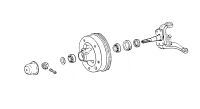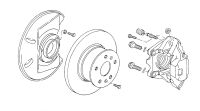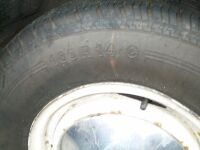Click here to return to previous page.
Home
 Check that each brake is not sticking by
raising each wheel and spinning it. The wheel should spin and come to a rest
smoothly. Disc brakes always drag slightly as the pads are in constant contact
with the disc. If the wheel when spun, comes to an abrupt halt a caliper over-
haul may be needed or on drum brakes, at the minimum adjustment is
required.
Check that each brake is not sticking by
raising each wheel and spinning it. The wheel should spin and come to a rest
smoothly. Disc brakes always drag slightly as the pads are in constant contact
with the disc. If the wheel when spun, comes to an abrupt halt a caliper over-
haul may be needed or on drum brakes, at the minimum adjustment is
required. brakes.
brakes. VW built the Type 2 as a commercial
vehicle and was designed to use commercial tyres - 185/15/C. The "C" referring to
commercial application. Check that the previous owner has not replaced tyres
with tyres intended for cars. The commercial tyres have 6 reinforced ply as
opposed to a cars 5. You may think that this in un-important but if you own a
camper conversion especially, just think how much your camper weighs with the
interior and all your bits and pieces for 2 weeks holiday. In the event of an
accident, your vehicle insurance could be invalidated if you have the incorrect
tyres fitted.
VW built the Type 2 as a commercial
vehicle and was designed to use commercial tyres - 185/15/C. The "C" referring to
commercial application. Check that the previous owner has not replaced tyres
with tyres intended for cars. The commercial tyres have 6 reinforced ply as
opposed to a cars 5. You may think that this in un-important but if you own a
camper conversion especially, just think how much your camper weighs with the
interior and all your bits and pieces for 2 weeks holiday. In the event of an
accident, your vehicle insurance could be invalidated if you have the incorrect
tyres fitted.Click here to return to previous page.